Your cart is currently empty!
Tag: Robust

Addressing Data Center Challenges with a Robust Problem Management Framework
In today’s digital age, data centers play a crucial role in storing and managing vast amounts of data for businesses and organizations. However, data centers face numerous challenges that can impact their performance and efficiency. From hardware failures to network issues, data center managers must be equipped to address these challenges effectively to ensure uninterrupted operations.One approach to tackling data center challenges is through the implementation of a robust problem management framework. Problem management is a proactive approach to identifying and resolving issues before they impact the business. By establishing a structured process for identifying, analyzing, and resolving problems, data center managers can minimize downtime and optimize performance.
Here are some key steps to address data center challenges with a robust problem management framework:
1. Identify and prioritize problems: The first step in problem management is to identify and prioritize issues that are affecting the data center. This can be done through regular monitoring and analysis of key performance indicators (KPIs) such as server uptime, network latency, and storage capacity. By identifying problems early on, data center managers can prioritize resources and address critical issues promptly.
2. Root cause analysis: Once a problem has been identified, data center managers must conduct a root cause analysis to determine the underlying reason for the issue. This may involve analyzing logs, conducting tests, and consulting with technical experts to pinpoint the source of the problem. By understanding the root cause, data center managers can develop effective solutions to prevent similar issues from occurring in the future.
3. Implement solutions: After identifying the root cause of a problem, data center managers must implement solutions to resolve the issue. This may involve deploying software patches, upgrading hardware, or reconfiguring network settings. It is essential to document the steps taken to address the problem and communicate these changes to relevant stakeholders to ensure transparency and accountability.
4. Monitor and review: Once a problem has been resolved, data center managers must monitor the system to ensure that the issue does not recur. Regular monitoring of key performance indicators can help identify any potential issues before they escalate. Additionally, data center managers should conduct post-incident reviews to evaluate the effectiveness of the solutions implemented and identify areas for improvement.
5. Continuous improvement: Problem management is an ongoing process that requires continuous improvement to address new challenges and optimize data center performance. By analyzing trends, identifying recurring issues, and implementing preventive measures, data center managers can enhance the resilience and efficiency of their data center operations.
In conclusion, addressing data center challenges requires a proactive and structured approach to problem management. By establishing a robust problem management framework, data center managers can effectively identify, analyze, and resolve issues to ensure uninterrupted operations and optimal performance. By prioritizing problems, conducting root cause analysis, implementing solutions, monitoring and reviewing, and continuously improving, data center managers can mitigate risks and enhance the reliability of their data center infrastructure.

Building a Robust Data Center Resilience Strategy for the Future
In today’s digital age, data centers have become the backbone of businesses, providing the necessary infrastructure to store and manage vast amounts of data. With the increasing reliance on data for everyday operations, it has become imperative for organizations to build a robust data center resilience strategy to ensure uninterrupted access to their critical information.Data center resilience refers to the ability of a data center to withstand and recover from unexpected disruptions, such as power outages, natural disasters, cyber-attacks, or equipment failures. A well-planned resilience strategy can help minimize downtime, protect data integrity, and maintain business continuity in the face of unforeseen events.
To build a resilient data center, organizations need to consider several key factors:
1. Redundancy: One of the fundamental principles of data center resilience is redundancy. This involves duplicating critical components, such as power supplies, cooling systems, and network connections, to ensure that if one fails, the other can take over seamlessly. Redundancy can help mitigate the impact of hardware failures and minimize downtime.
2. Geographic diversity: In today’s interconnected world, data centers are often spread across multiple locations to ensure geographic diversity. This can help protect against regional disasters, such as earthquakes, hurricanes, or floods, that could potentially disrupt operations at a single data center. By distributing data centers across different regions, organizations can minimize the risk of downtime and data loss.
3. Backup and disaster recovery: In addition to redundancy and geographic diversity, organizations should also have a robust backup and disaster recovery plan in place. This involves regularly backing up data to offsite locations and implementing procedures to quickly recover and restore data in the event of a disaster. A well-defined disaster recovery plan can help organizations recover from disruptions quickly and minimize the impact on business operations.
4. Security measures: Data centers are prime targets for cyber-attacks, given the valuable information they store. To enhance resilience, organizations need to implement robust security measures, such as firewalls, intrusion detection systems, and encryption technologies, to protect data from unauthorized access. Regular security audits and updates are essential to stay ahead of evolving cyber threats.
5. Regular testing and maintenance: Building a resilient data center is not a one-time effort but an ongoing process. Organizations should regularly test their resilience strategies through simulated disaster scenarios and conduct routine maintenance to ensure that all systems are functioning optimally. By proactively identifying and addressing vulnerabilities, organizations can strengthen their data center resilience over time.
In conclusion, building a robust data center resilience strategy is essential for organizations to safeguard their critical data and ensure business continuity in the face of unforeseen events. By implementing redundancy, geographic diversity, backup and disaster recovery plans, security measures, and regular testing and maintenance, organizations can enhance the resilience of their data centers and protect their most valuable asset – data. Investing in data center resilience today will pay off in the future, ensuring that organizations can weather any storm and continue to thrive in the digital age.
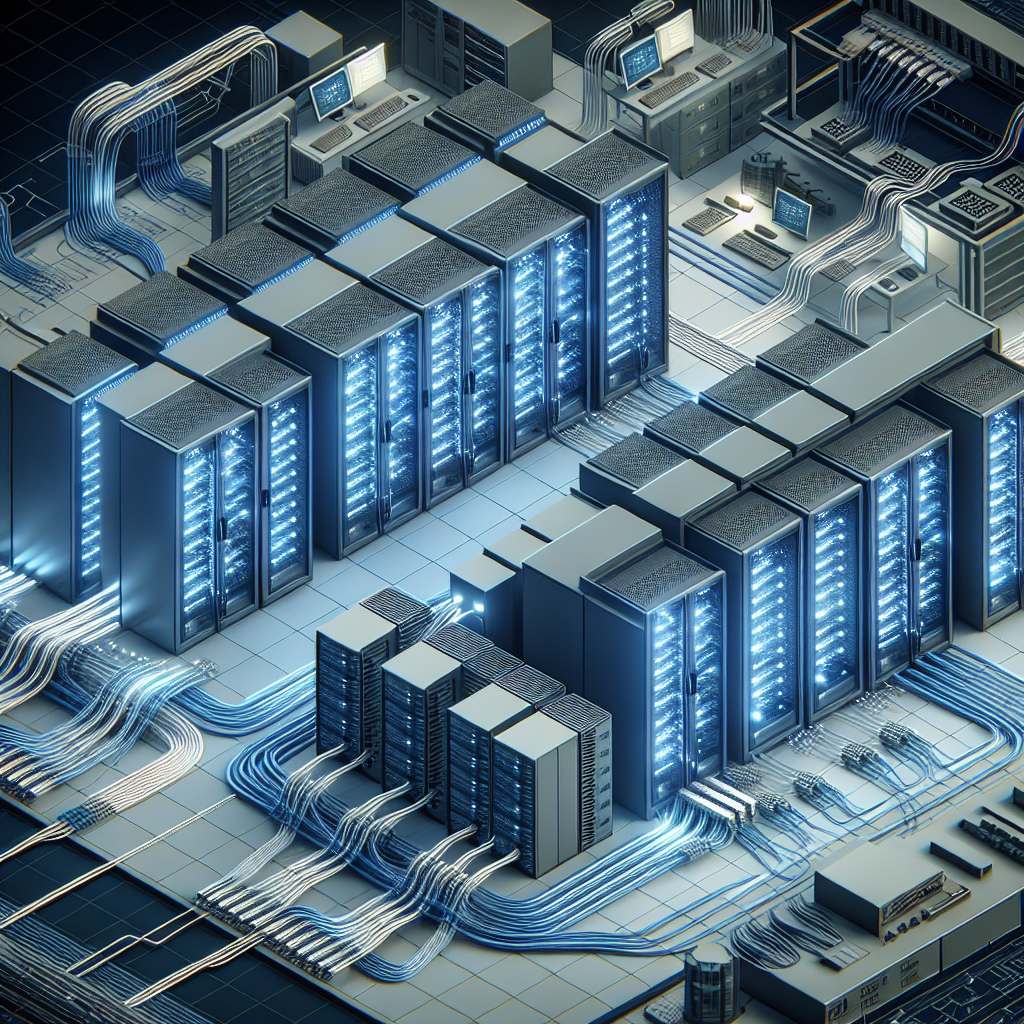
Best Practices for Designing a Robust Data Center Network Infrastructure
In today’s digital age, data centers are the backbone of any organization’s IT infrastructure. As businesses rely more and more on data to drive decision-making and operations, the need for a robust and reliable data center network infrastructure has never been more critical. A well-designed data center network can ensure seamless connectivity, high performance, and scalability to meet the growing demands of modern applications and services.To achieve this, organizations must adhere to best practices when designing their data center network infrastructure. Here are some key considerations to keep in mind:
1. Redundancy and Resilience:
One of the most critical aspects of a robust data center network is redundancy and resilience. This means having backup systems and failover mechanisms in place to ensure continuous operation in the event of hardware failures or network outages. Redundancy can be achieved through dual power supplies, network switches, and data connections, as well as redundant cooling systems and fire suppression mechanisms.
2. Scalability:
A data center network must be able to scale to accommodate the growing volume of data and traffic as an organization expands. This means designing the network with future growth in mind and ensuring that it can easily accommodate additional servers, storage, and networking equipment without causing bottlenecks or performance issues.
3. Segmentation and Security:
Segmenting the data center network into separate virtual LANs (VLANs) or subnets can help enhance security by isolating sensitive data and applications from the rest of the network. Implementing firewalls, intrusion detection systems, and access controls can further enhance network security and protect against cyber threats.
4. Performance Optimization:
To ensure optimal performance, organizations should design their data center network with high-speed networking equipment, such as gigabit or 10-gigabit Ethernet switches and routers. Additionally, implementing load balancing and traffic prioritization mechanisms can help distribute network traffic evenly and ensure that critical applications receive the necessary bandwidth.
5. Monitoring and Management:
Regular monitoring and management of the data center network are essential to proactively detect and address potential issues before they escalate into major problems. Utilizing network monitoring tools and management software can help IT teams identify performance bottlenecks, troubleshoot network problems, and optimize network performance.
In conclusion, designing a robust data center network infrastructure requires careful planning, attention to detail, and adherence to best practices. By incorporating redundancy, scalability, security, performance optimization, and effective monitoring and management, organizations can ensure that their data center network can meet the demands of today’s digital world and support their business operations effectively.
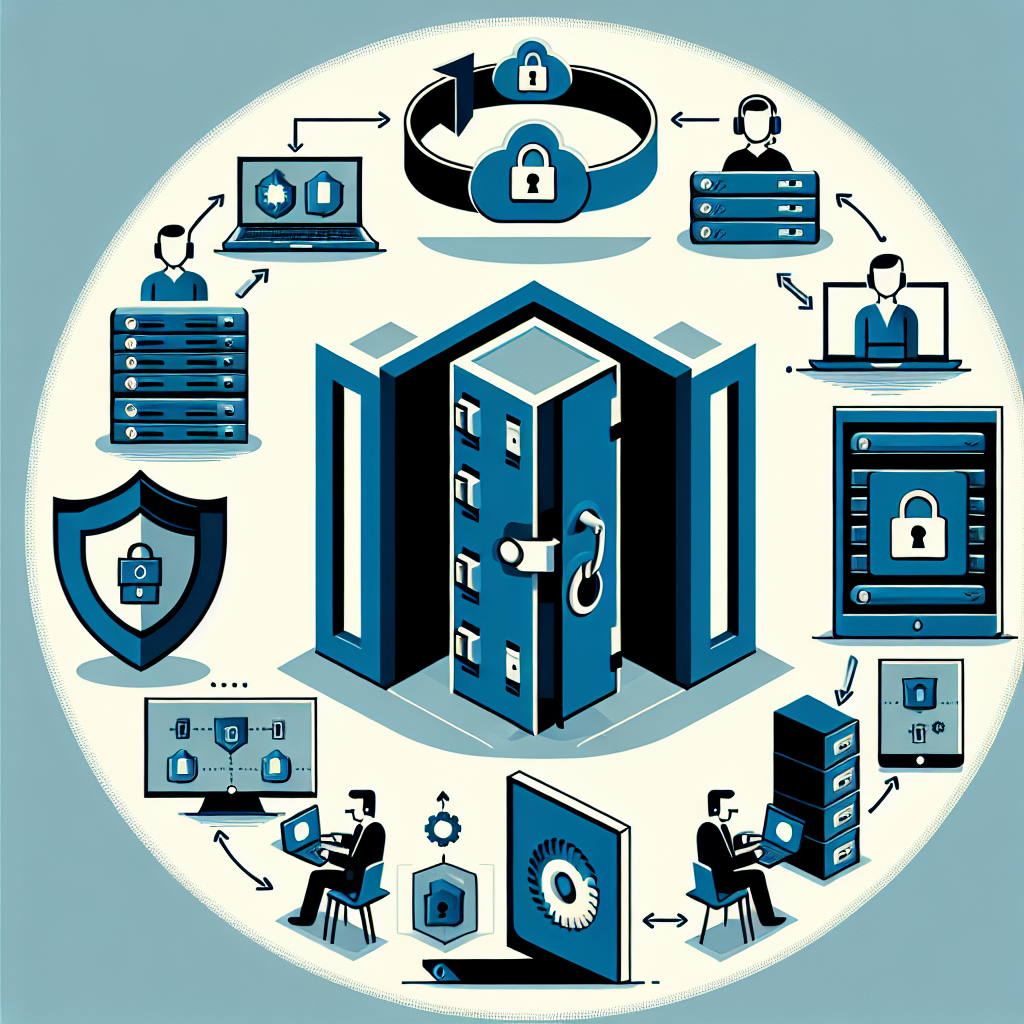
Ensuring Data Center Security with Robust Backup and Recovery Processes
Data centers are the backbone of businesses today, storing and processing vast amounts of critical data. With the increasing threat of cyberattacks and natural disasters, ensuring data center security is more important than ever. One essential aspect of data center security is having robust backup and recovery processes in place.Backup and recovery processes are crucial for protecting data against various risks such as hardware failures, cyberattacks, human errors, and natural disasters. Without proper backup and recovery measures, businesses risk losing valuable data and facing significant financial and reputational damage.
To ensure data center security with robust backup and recovery processes, organizations need to implement the following best practices:
1. Regular backups: Regularly backing up data is essential to ensure that critical information is protected in case of a security breach or system failure. Organizations should schedule automatic backups at frequent intervals to minimize data loss.
2. Offsite backups: Storing backup data offsite is crucial to protect against physical threats such as fires, floods, and theft. Offsite backups ensure that data can be quickly recovered in case of a disaster at the primary data center.
3. Encryption: Encrypting backup data is essential to prevent unauthorized access to sensitive information. By encrypting backups, organizations can ensure that data remains secure both during transmission and storage.
4. Testing backups: Regularly testing backups is crucial to ensure that data can be successfully restored in case of a disaster. Organizations should conduct recovery tests periodically to verify the integrity of backup data and the effectiveness of the recovery process.
5. Monitoring and auditing: Continuous monitoring and auditing of backup and recovery processes are essential to detect any anomalies or security breaches. By monitoring backup activities, organizations can identify potential issues and take corrective actions promptly.
6. Disaster recovery plan: Having a comprehensive disaster recovery plan in place is essential to ensure business continuity in case of a data center outage or security incident. Organizations should document procedures for data recovery, identify critical systems and applications, and establish clear communication channels during a crisis.
By implementing these best practices, organizations can ensure data center security with robust backup and recovery processes. Investing in backup and recovery solutions not only protects critical data but also helps mitigate the risks associated with cyber threats and natural disasters. In today’s digital landscape, data center security is a top priority, and organizations must prioritize backup and recovery processes to safeguard their valuable information.

Implementing a Robust Data Center Change Management Plan: Tips and Tricks
In today’s fast-paced and ever-evolving business landscape, data centers play a crucial role in ensuring the smooth operation of an organization’s IT infrastructure. With the rapid advancements in technology, data centers are constantly undergoing changes to keep up with the demands of the digital age. However, implementing these changes without a proper plan in place can lead to disruptions in services, downtime, and potential data breaches. This is where a robust data center change management plan comes into play.A data center change management plan is a structured approach to managing changes in the data center environment. It involves assessing the impact of proposed changes, obtaining approvals from stakeholders, and implementing changes in a controlled and systematic manner. By following a well-defined change management plan, organizations can minimize the risks associated with data center changes and ensure the stability and reliability of their IT infrastructure.
Here are some tips and tricks for implementing a robust data center change management plan:
1. Establish clear roles and responsibilities: Assign specific roles and responsibilities to individuals involved in the change management process. This includes change initiators, approvers, implementers, and reviewers. Clearly define the responsibilities of each role to ensure accountability and streamline the change management process.
2. Define a standardized change management process: Develop a standardized process for requesting, reviewing, approving, and implementing changes in the data center environment. This process should include steps for assessing the impact of changes, obtaining approvals from stakeholders, and documenting changes for future reference.
3. Implement a change advisory board (CAB): A CAB is a group of stakeholders responsible for reviewing and approving proposed changes in the data center environment. The CAB should include representatives from various departments, including IT, operations, and security, to ensure that all aspects of the change are considered before implementation.
4. Conduct thorough impact assessments: Before implementing any changes in the data center environment, it is important to conduct thorough impact assessments to identify potential risks and dependencies. This includes assessing the technical, operational, and financial impact of the proposed changes to mitigate any potential issues that may arise.
5. Communicate effectively: Communication is key when implementing changes in the data center environment. Keep stakeholders informed about the status of changes, potential risks, and mitigation strategies. Provide regular updates throughout the change management process to ensure transparency and accountability.
6. Test changes in a controlled environment: Before implementing changes in the production environment, it is important to test them in a controlled environment, such as a test or development environment. This allows organizations to identify any issues or conflicts that may arise during the implementation phase and make necessary adjustments before going live.
7. Document changes and lessons learned: Documenting changes and lessons learned is essential for continuous improvement in the data center change management process. Keep detailed records of all changes, including the rationale, impact assessments, approvals, and implementation details. Review these documents regularly to identify trends and areas for improvement.
By implementing a robust data center change management plan, organizations can minimize risks, ensure the stability and reliability of their IT infrastructure, and adapt to the ever-changing demands of the digital age. Follow these tips and tricks to create a structured and efficient change management process that will help your organization navigate the complexities of data center changes successfully.
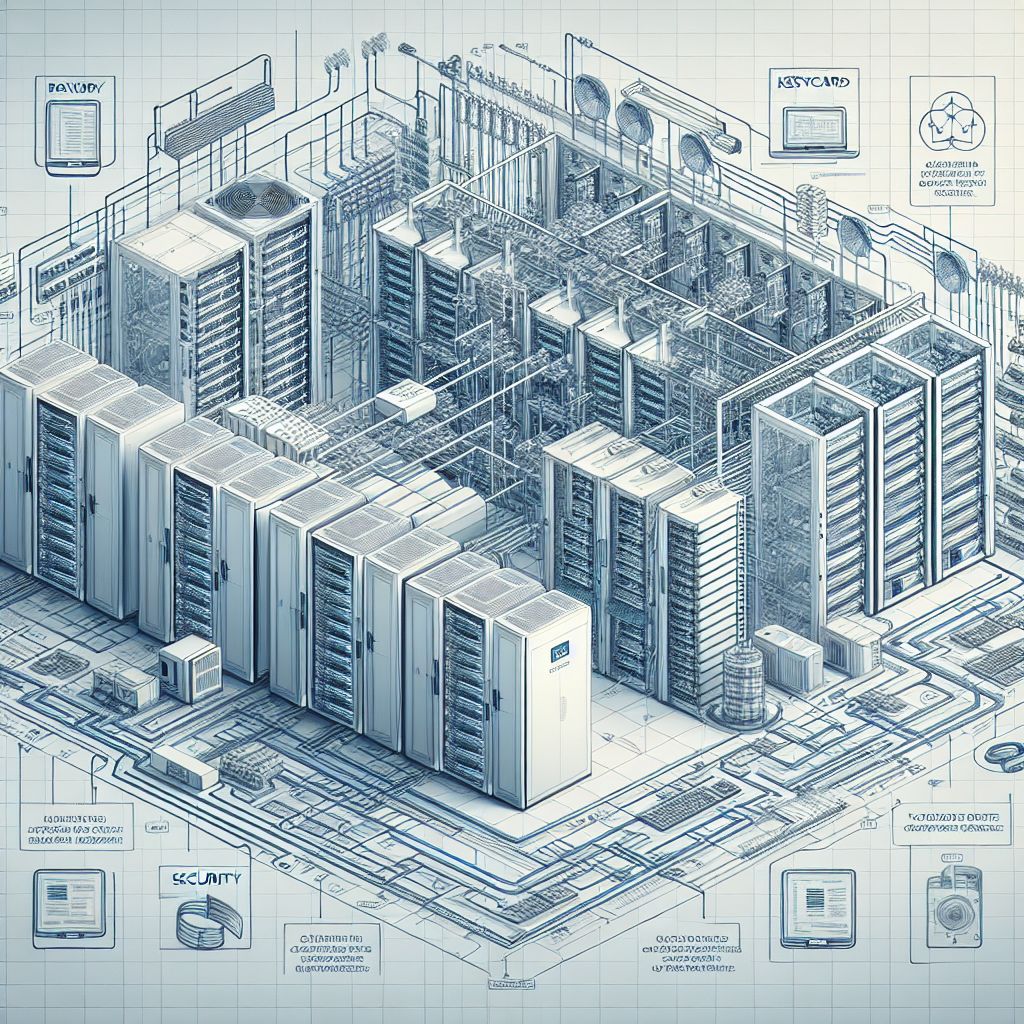
Building a Robust Data Center Infrastructure: Key Considerations for Resilience
In today’s digital age, data centers are the backbone of any organization’s IT infrastructure. With the increasing reliance on data-driven decision-making and the growing amount of data being generated and stored, it is crucial for organizations to build a robust data center infrastructure that is resilient and able to withstand any potential disruptions.There are several key considerations that organizations must take into account when building a resilient data center infrastructure. These considerations include:
1. Redundancy: One of the most important aspects of a resilient data center infrastructure is redundancy. This means having backup systems and components in place to ensure that if one component fails, there is another one that can seamlessly take over. Redundancy can be built into all aspects of the data center, from power supplies to cooling systems to network connections.
2. Scalability: As organizations grow and their data needs increase, it is important for their data center infrastructure to be able to scale accordingly. This means having the ability to easily add more servers, storage, and networking equipment as needed without causing disruptions to the existing infrastructure.
3. Security: Data centers house sensitive and critical information, so it is essential to have robust security measures in place to protect this data. This includes physical security measures such as access controls and surveillance cameras, as well as cybersecurity measures to protect against cyber threats.
4. Disaster recovery: No matter how resilient a data center infrastructure is, there is always the potential for disasters such as natural disasters, power outages, or cyber attacks. Organizations must have a comprehensive disaster recovery plan in place to ensure that their data can be recovered and operations can be resumed quickly in the event of a disruption.
5. Monitoring and maintenance: Regular monitoring and maintenance of the data center infrastructure are essential to ensure that everything is running smoothly and to identify and address any potential issues before they escalate into major problems. This includes conducting regular audits, testing backup systems, and performing software updates and patches.
Building a resilient data center infrastructure requires careful planning, investment, and ongoing maintenance. By considering key factors such as redundancy, scalability, security, disaster recovery, and monitoring, organizations can ensure that their data center infrastructure is able to withstand any potential disruptions and continue to support their operations effectively.
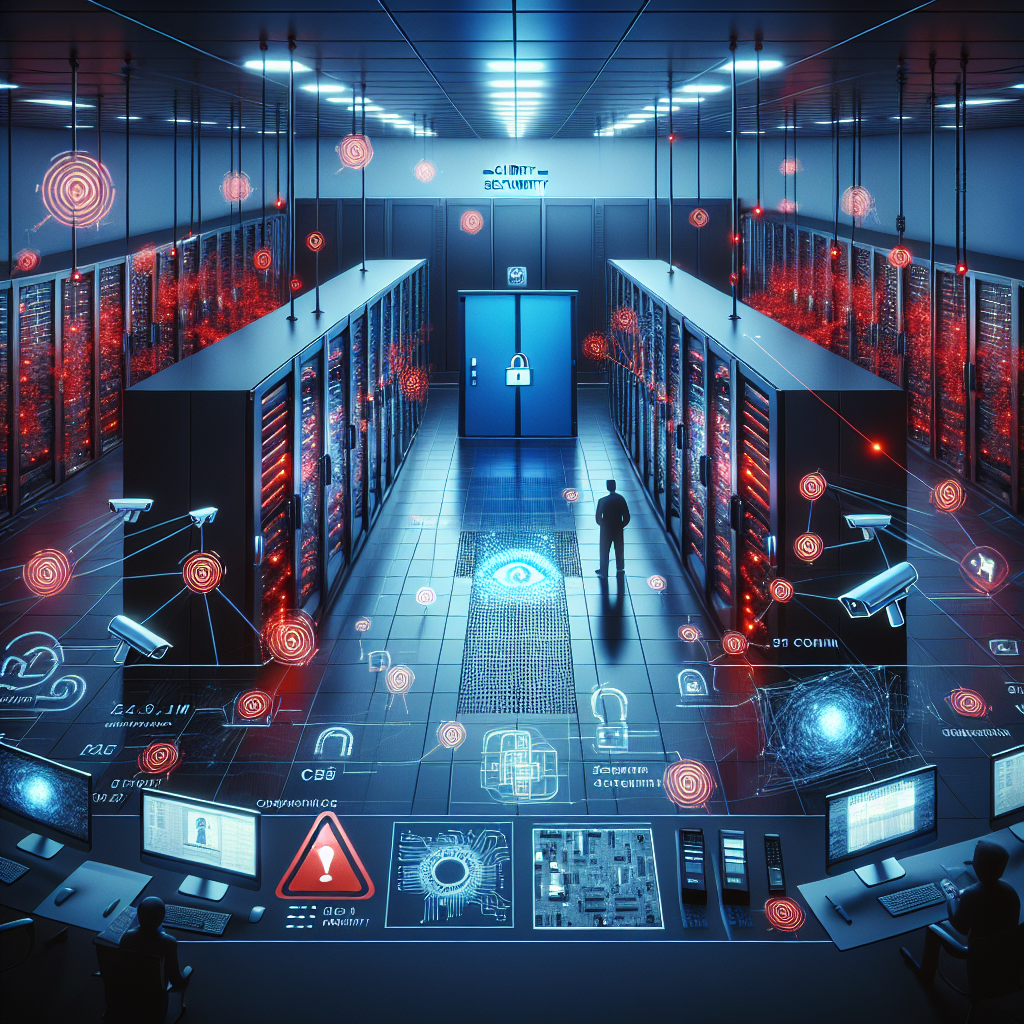
Key Components of a Robust Data Center Security System
Data centers are critical infrastructure for businesses, housing and managing vast amounts of sensitive information. With cyber threats on the rise, it is more important than ever to implement a robust security system to protect this valuable data. A comprehensive data center security system should include key components to ensure the safety and integrity of the information stored within.1. Physical Security Measures
One of the first lines of defense for a data center is physical security measures. This includes access controls such as biometric scanners, keycards, and PIN codes to restrict entry to only authorized personnel. Security guards, surveillance cameras, and alarms can also help to deter and detect unauthorized access.
2. Fire Suppression Systems
Data centers are at risk of fire due to the high concentration of electrical equipment. A robust fire suppression system is essential to quickly extinguish any flames and prevent damage to the servers and data stored within. This may include sprinkler systems, smoke detectors, and fire suppression agents.
3. Environmental Controls
Data centers require precise environmental controls to ensure optimal performance and longevity of the equipment. This includes temperature and humidity monitoring systems to prevent overheating and moisture buildup, which can lead to equipment failure and data loss.
4. Redundant Power Systems
Uninterrupted power supply is crucial for data centers to prevent downtime and data loss. Redundant power systems such as backup generators and battery backups can ensure continuous operation in the event of a power outage or electrical failure.
5. Network Security
Data centers are connected to external networks, making them vulnerable to cyber attacks. Network security measures such as firewalls, intrusion detection systems, and encryption protocols can help to secure data transmissions and prevent unauthorized access.
6. Data Encryption
Data encryption is essential for protecting sensitive information stored within a data center. Encryption algorithms can scramble data so that it is unreadable without the proper decryption key, adding an extra layer of security to prevent data breaches.
7. Regular Security Audits
Regular security audits and assessments are essential for evaluating the effectiveness of a data center security system. By identifying vulnerabilities and weaknesses, businesses can take proactive measures to strengthen their security posture and prevent potential security breaches.
In conclusion, a robust data center security system should incorporate physical security measures, fire suppression systems, environmental controls, redundant power systems, network security, data encryption, and regular security audits. By implementing these key components, businesses can protect their valuable data from cyber threats and ensure the integrity and availability of their information.
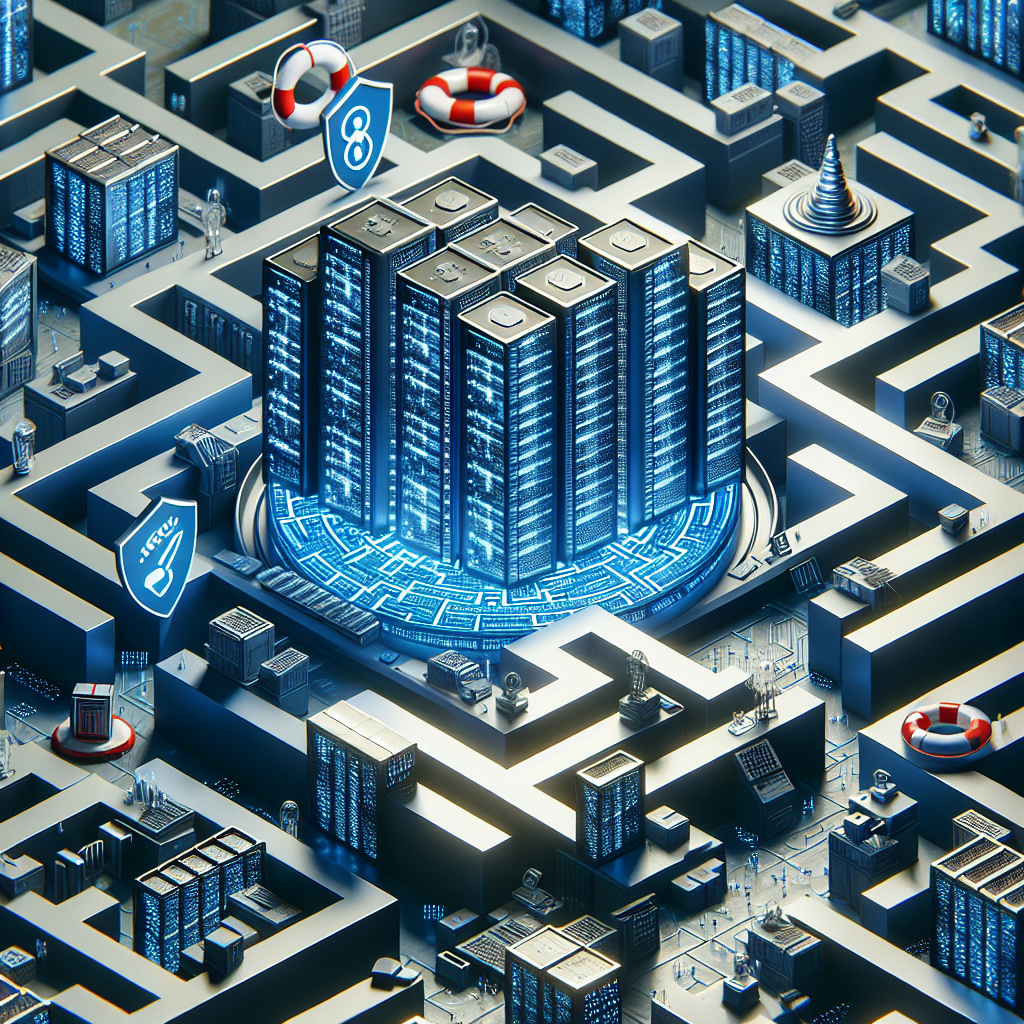
Mitigating Risks with a Robust Data Center Change Management Strategy
In today’s fast-paced digital world, data centers play a crucial role in storing, processing, and managing vast amounts of data. With the increasing reliance on technology and data, it is essential for organizations to have a robust data center change management strategy in place to mitigate risks and ensure the smooth operation of their data centers.Change management is the process of planning, implementing, and controlling changes to the infrastructure, applications, and services in a data center environment. It involves assessing the impact of changes, identifying potential risks, and implementing measures to minimize disruptions and downtime.
One of the key benefits of having a robust data center change management strategy is the ability to proactively identify and address potential risks before they escalate into major issues. By following a structured change management process, organizations can evaluate the impact of proposed changes, assess potential risks, and implement appropriate controls to mitigate those risks.
Furthermore, a well-defined change management strategy helps to ensure that changes are implemented in a controlled manner, with minimal disruption to ongoing operations. This can help to prevent costly downtime, data loss, and security breaches that can result from poorly managed changes.
To develop an effective data center change management strategy, organizations should consider the following key elements:
1. Establish clear policies and procedures: Define a set of policies and procedures that outline the change management process, including roles and responsibilities, approval processes, and communication protocols.
2. Conduct thorough risk assessments: Before implementing any changes, conduct a comprehensive risk assessment to identify potential risks and their potential impact on the data center environment. This will help to prioritize changes and allocate resources effectively.
3. Implement strict change control processes: Implement strict change control processes to ensure that all changes are properly documented, reviewed, and approved before implementation. This helps to prevent unauthorized changes and ensures that all changes are traceable and reversible if needed.
4. Test changes in a controlled environment: Before implementing changes in a production environment, test them in a controlled environment to identify any potential issues or conflicts. This can help to minimize the risk of disruptions and ensure a smooth transition to the production environment.
5. Monitor and review changes: After implementing changes, monitor their impact on the data center environment and review the effectiveness of the change management process. This will help to identify any areas for improvement and ensure continuous optimization of the change management strategy.
In conclusion, having a robust data center change management strategy is essential for mitigating risks and ensuring the smooth operation of data centers. By following a structured change management process and implementing appropriate controls, organizations can minimize disruptions, prevent data loss, and enhance the overall reliability and security of their data center environments.
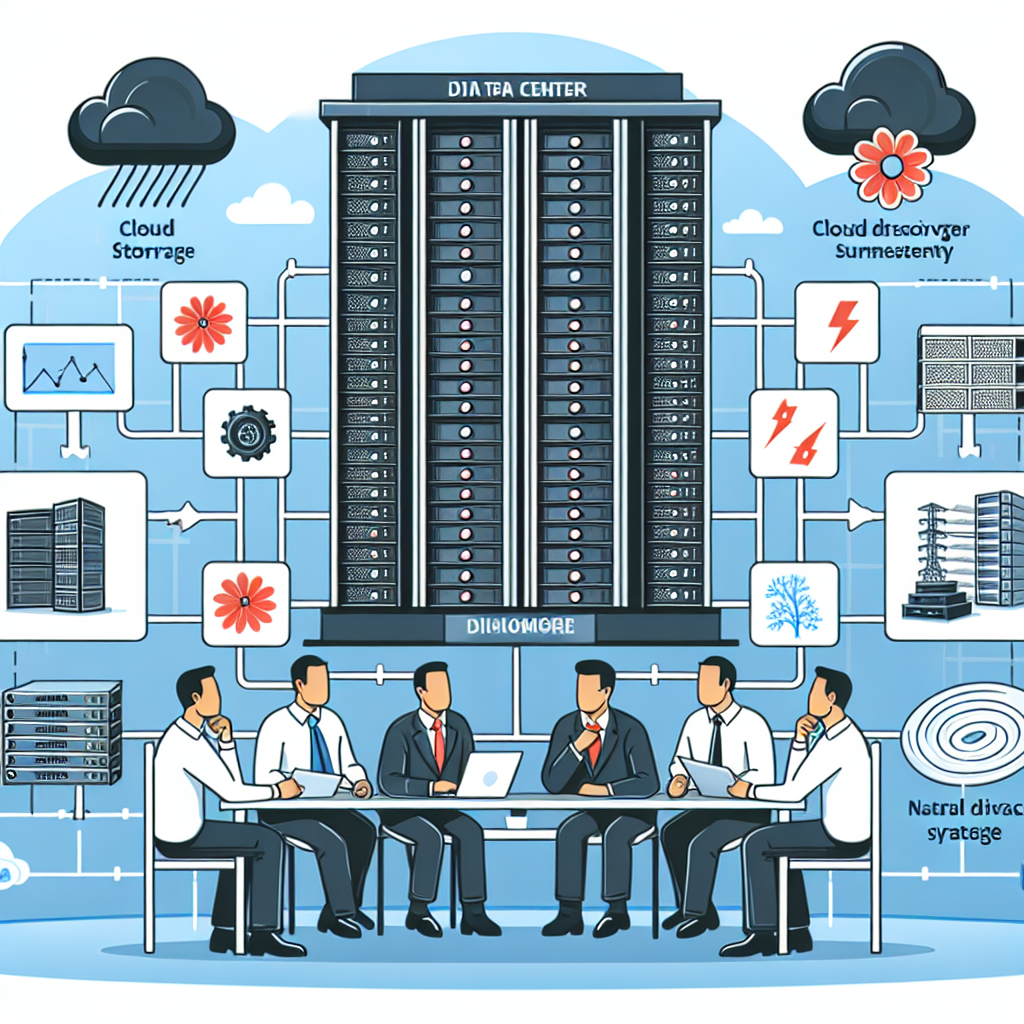
Building a Robust Data Center Disaster Recovery Strategy: Lessons from Industry Leaders
In today’s digital age, data is more valuable than ever before. From sensitive customer information to critical business operations, companies rely on their data to keep their operations running smoothly. However, disasters can strike at any time, threatening the integrity and availability of this crucial information. That’s why having a robust data center disaster recovery strategy is essential for organizations of all sizes.Industry leaders have long recognized the importance of investing in disaster recovery planning. By learning from their experiences, other companies can develop effective strategies to protect their data and ensure business continuity in the face of potential disasters. Here are some key lessons from industry leaders on building a robust data center disaster recovery strategy:
1. Identify and assess potential risks: Before developing a disaster recovery plan, it’s crucial to understand the potential threats that could impact your data center. This includes natural disasters such as hurricanes, earthquakes, and floods, as well as man-made disasters like cyber-attacks and equipment failures. By conducting a thorough risk assessment, organizations can prioritize their efforts and resources to address the most significant threats.
2. Develop a comprehensive disaster recovery plan: A successful disaster recovery plan should outline the steps to be taken before, during, and after a disaster to ensure the quick and effective recovery of data and operations. This includes establishing backup and recovery procedures, defining roles and responsibilities, and testing the plan regularly to identify and address any gaps or weaknesses.
3. Implement redundant systems and backups: To minimize downtime and data loss during a disaster, organizations should invest in redundant systems and backups. This includes replicating data across multiple locations, implementing failover mechanisms, and using cloud-based storage services to ensure data availability in the event of a disaster.
4. Train and educate employees: Employees play a critical role in the success of a disaster recovery plan. By providing training and education on disaster response procedures, organizations can ensure that their staff knows how to act quickly and effectively in the event of a disaster. Regular drills and simulations can also help to reinforce the importance of disaster recovery planning and identify areas for improvement.
5. Monitor and assess the effectiveness of the plan: Disaster recovery planning is an ongoing process that requires regular monitoring and assessment to ensure its effectiveness. By tracking key performance indicators, such as recovery time objectives and data loss tolerance, organizations can identify potential issues and make adjustments to their plan as needed.
In conclusion, building a robust data center disaster recovery strategy is essential for organizations to protect their data and ensure business continuity in the face of potential disasters. By learning from industry leaders and following these key lessons, companies can develop effective disaster recovery plans that minimize downtime, data loss, and financial impact in the event of a disaster.

MySQL High Availability : Tools for Building Robust Data Centers

MySQL High Availability : Tools for Building Robust Data Centers
Price : 4.50
Ends on : N/A
View on eBay
MySQL High Availability : Tools for Building Robust Data CentersIn today’s fast-paced digital world, ensuring high availability of your MySQL database is crucial for maintaining the seamless operation of your applications. Building a robust data center with tools that enhance scalability, reliability, and performance is essential for minimizing downtime and maximizing uptime.
Here are some key tools and techniques for achieving high availability in MySQL data centers:
1. MySQL Replication: MySQL replication is a built-in feature that allows you to create multiple copies of your database and distribute the workload across different servers. This not only improves performance but also provides redundancy in case of server failures.
2. MySQL Cluster: MySQL Cluster is a distributed database solution that provides high availability and scalability by distributing data across multiple nodes in a cluster. It ensures that your data remains accessible even in the event of hardware failures or network issues.
3. Load Balancers: Load balancers help distribute incoming traffic across multiple database servers, ensuring that no single server is overloaded. By evenly distributing the workload, load balancers improve performance and prevent downtime caused by server failures.
4. Monitoring Tools: Monitoring tools such as MySQL Enterprise Monitor or Percona Monitoring and Management can help you keep track of your database’s performance, health, and availability in real-time. By monitoring key metrics and setting up alerts, you can quickly identify and resolve any issues that may arise.
5. Automatic Failover: Implementing automatic failover mechanisms can reduce downtime by automatically redirecting traffic to a standby server in the event of a server failure. Tools like MySQL Replication, MySQL Cluster, or third-party solutions such as ProxySQL can help automate failover processes.
Building a robust data center with these tools and techniques can help you achieve high availability for your MySQL database, ensuring that your applications run smoothly and uninterrupted. By investing in the right tools and strategies, you can minimize downtime, improve performance, and provide a seamless experience for your users.
#MySQL #High #Availability #Tools #Building #Robust #Data #Centers
